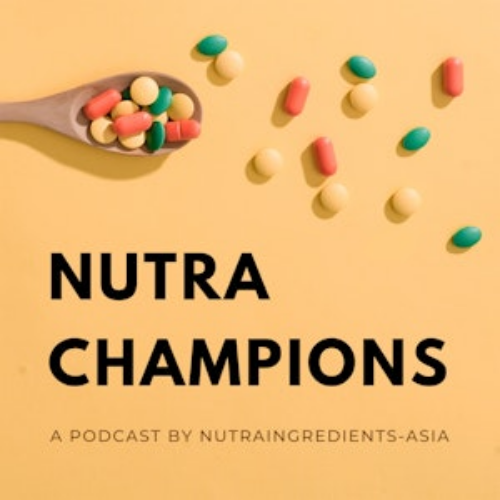Eye health supplements sold in Australasia, North America and UK vary widely in formulation and price - study

In a review analysing 43 supplements sold in these countries, 10 products were shown to meet the recommended ingredients and dose of the Age-Related Eye Disease Studies 2 (AREDS2) formula, another 10 had dosage above the AREDS2 formula, while the rest (n=23) contained ingredients at a lower dose.
The Age-Related Eye Disease Studies (AREDS) 2 trial suggested a supplement formula, which was shown to be beneficial in reducing the risk of disease progression and salvaging functional vision in eyes. The formula comprises of 25mg of zinc, 10mg of lutein, 2mg of zeaxanthin, 500mg of vitamin C, 400IU of vitamin E and 2mg of copper.
About 8% of the world’s population suffer from AMD, a leading cause of irreversible vision loss in the elderly. Oxidative stress is said to be one factor involved in AMD onset, and vitamins and antioxidant supplementation have shown effective in slowing down the progression.
“There are many AMD supplements available on the market, with variable formulations and cost, and it is often difficult for clinicians to keep up with which products contain the evidence-based AREDS formula with the correct ingredients at their correct dosages,” said Dr Ben LaHood, one of the authors of this review. LaHood is also a consultant ophthalmologist, cataract and refractive surgeon at The Queen Elizabeth Hospital, Adelaide and Ashford Advanced Eye Care in Adelaide, Australia.
He said: “This is the first study of AMD supplements using the AREDS 2 formula as the standard. There was a study published by Arora et al in 2004 which used the AREDS 1 formula as the standard for comparison.” AREDS 1 formula used β-carotene (15mg) instead of lutein and zeaxanthin, and a higher dose of zinc (80mg).
The results were published in Clinical and Experimental Optometry.
Study method
Researchers analysed commercially available AMD supplements in pharmacies and online shopping platforms including Amazon and eBay across Australia, New Zealand, US, UK and Canada.
In total, 43 products that contained all the AREDS 2 ingredients were included in this analysis. Their ingredient list, dosage and price were recorded.
Formula
The results revealed 10 products matched 100% of the AREDS2 formula, these include MacuShield Gold (sold at a UK Pharmacy) and Nature’s Eye Vitamins AREDS2 Plus (available online).
Another 10 products contained dosages more than the AREDS2 formula, some examples are Quality Health Macula Guard (Australasian pharmacy), Bausch and Lomb PreserVision AREDS2 (US pharmacy, UK pharmacy, Canadian Pharmacy) and MedOp MaxiVision (US pharmacy).
Most of the products analysed (n=23) contained dosages less than the AREDS2 formula. Some of these products were Bausch and Lomb Ocuvite (US pharmacy, UK pharmacy, Canadian Pharmacy), Blackmores Macu-Vision Plus (Australasian pharmacy), Herbs of Gold Macu-Guard with Bilberry (Australasian pharmacy), Vitabiotics Visionace (UK Pharmacy) and Walgreens Adult 50+ Eye Health Gel (US Pharmacy).
Pharmacies in the US had the most supplements that fulfilled the AREDS2 formula and dosage with 8 products, followed by Canada (n=5), UK (n=3) and lastly Australasian (n=1).
In this review, the delivery format of the AMD supplements were studied, and most products were in capsule form (n=23), followed by soft-gel, tablet, and powder.
About 38 products were recommended as once-daily dosing, while some required twice daily dosage.
Researchers commented that supplements with more than once-daily dosing could impose difficulties on those with poor compliance and poor ability to self-administer medication. “Pill burden should be considered in this (elderly) population, where the simplicity of administration should be emphasised.”
Price
In terms of pricing, there was a large variation.
Prices of the supplements ranged between AUD$0.12 (US$0.085) to AUD$6.72 (US$4.78) per day.
Researchers said: “Cost is an important factor to consider, as these supplements are not routinely subsidised through pharmaceutical funding schemes,
“Clinicians should consider the ability of patients to afford these supplements, and the decision-making process should involve a discussion about their disease severity, average diet, financial circumstances, as well as age and life expectancy. This is of significance at an upstream level, as AMD may be more prevalent in those of a lower socioeconomic background.”
More clinician awareness needed
These findings suggest that commercially available AMD supplements vary widely in price and resemblance to the AREDS 2 formulation.
As AMD supplements are readily available without a prescription, patients must select from a diverse range of over-the-counter supplements.
This study aims to assist eye health practitioners with counselling AMD patients on supplementation. “We conducted this review with the aim of assisting clinicians in helping their patients choose the right supplement for them,” LaHood said.
“Most clinicians and pharmacists would be aware of AMD supplements in the market, but they may not be aware of the exact formulation that is recommended by evidence-based studies such as AREDS. It is probably not necessary to memorise the dosages, but it is important to understand that ingredients in these supplements are variable and to know where to look for the recommended ingredients and dosages.”
LaHood and the other two authors are working on different areas of ophthalmology.
“One of the main reasons why this project has attracted so much attention is that it is extremely helpful to a wide range of eye care professionals, medical specialists and even patients. Although the three authors all work in different subspecialties of ophthalmology, we all wanted to be better informed about how to care for our ARMD patients optimally.”
LaHood will continue research work on treating astigmatism to optimise outcomes from cataract surgery. Dr Nick Andrew, a consultant ophthalmologist at Sight Specialists in Gold Coast, Australia will focus on glaucoma research, while Dr Ye Li, a house officer at Princess Alexandra Hospital in Brisbane, Australia will continue work in corneal surgery.
Source: Clinical and Experimental Optometry
https://doi.org/10.1080/08164622.2021.1989264
“Evidence-based vitamin supplements for age-related macular degeneration: an analysis of available products”
Authors: Ye Li, Nick Andrew and Benjamin R LaHood















